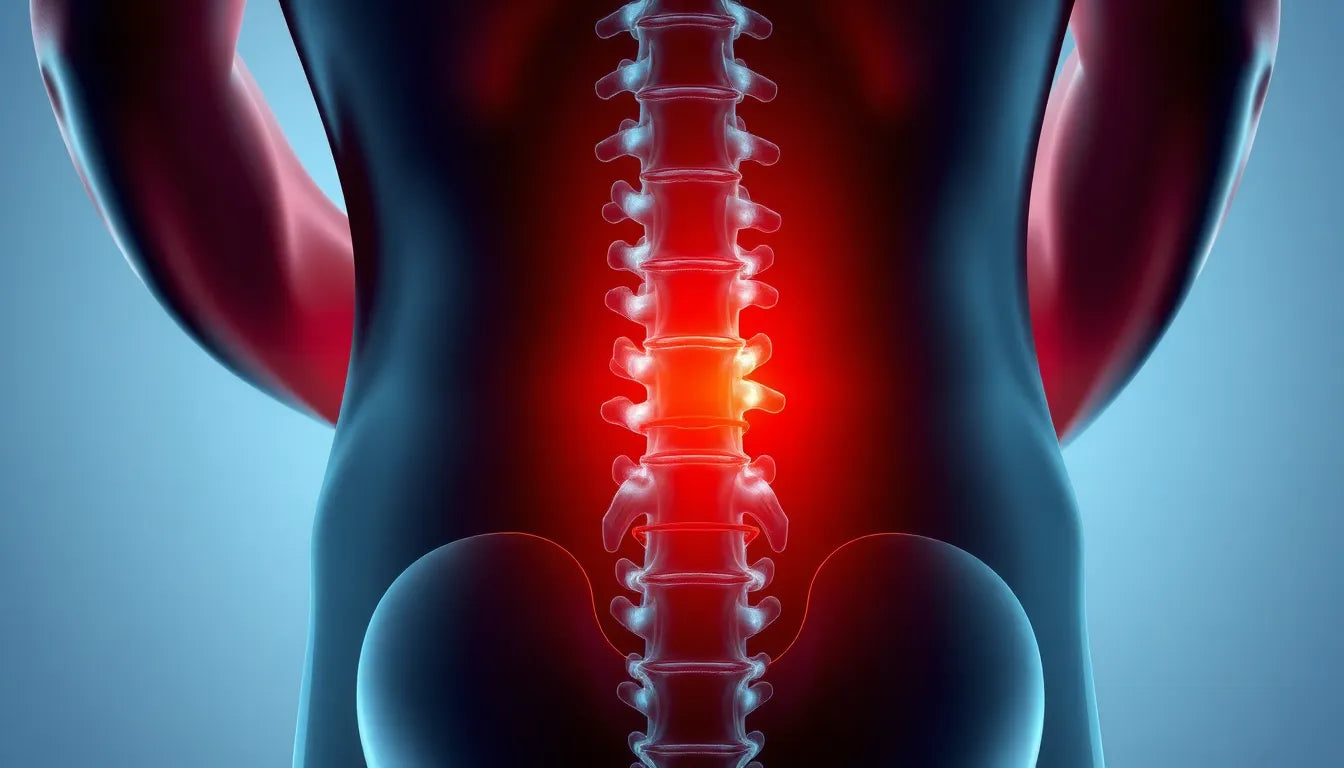As our beloved canine companions age, they may face various health challenges, one of which is spondylosis. This condition, often associated with the natural aging process in dogs, involves the development of bony growths, or spurs, along the spine. While spondylosis in dogs is quite common, particularly in older animals, it often goes unnoticed until an X-ray for another issue reveals its presence. Understanding this condition is essential for dog owners to ensure their pets continue to live comfortably and maintain a good quality of life.
understanding spondylosis in dogs
Spondylosis is a degenerative spinal condition that results in the formation of bone spurs along the vertebrae. These spurs develop as a response to the wear and tear of the spine over time, and while they can be found in dogs of any breed, older dogs are more frequently affected. Interestingly, many dogs with spondylosis show no outward symptoms and lead normal lives without any apparent discomfort. However, for some, these bony growths can lead to stiffness and pain, impacting their mobility and overall well-being.
Recognizing the prevalence of spondylosis in dogs is crucial for pet owners. Awareness allows for better management of symptoms when they do appear and ensures that any changes in your dog's behavior or mobility are promptly addressed. By understanding this condition, you can work with your veterinarian to develop a care plan that supports your dog's health and happiness.
common symptoms and challenges
While spondylosis often remains asymptomatic, there are instances where symptoms do manifest, affecting your dog's daily life. Common signs include stiffness, noticeable back pain, and difficulty rising from a resting position. Dogs may also show reluctance to jump or engage in physical activities they previously enjoyed. In more severe cases, nerve involvement can lead to incontinence and muscle atrophy.
These symptoms can significantly impact a dog's mobility and comfort, making it challenging for them to participate in regular activities. This underscores the importance of attentive care and observation. By monitoring your dog for these signs, you can take proactive steps to alleviate discomfort and improve their quality of life. Simple adjustments to their routine, environment, and diet can make a substantial difference in managing the effects of spondylosis.
In conclusion, while spondylosis is a common condition in dogs, particularly as they age, understanding its implications and symptoms is key to ensuring your pet remains comfortable and active. By staying informed and working closely with your veterinarian, you can help your dog navigate this condition with ease, providing them with the care and support they need to thrive in their golden years.
diagnosing and understanding spondylosis in dogs
Diagnosing spondylosis in dogs typically involves a straightforward process, primarily using radiographs, or X-rays. These imaging techniques reveal the characteristic bone spurs along the vertebrae, confirming the presence of the condition. In cases where symptoms are severe or more detailed imaging is required, additional tests such as MRI or CT scans may be recommended by your veterinarian. It is important to note that while spondylosis is a degenerative condition with no cure, understanding its nature allows for effective symptom management, ensuring your dog maintains a good quality of life.
comprehensive management approaches
pain management strategies
For dogs experiencing discomfort or pain due to spondylosis, pain management is a crucial aspect of care. Non-steroidal anti-inflammatory drugs (NSAIDs) are commonly prescribed to alleviate pain and reduce inflammation. Other medications such as gabapentin and tramadol may be used for pain relief, especially in cases of nerve involvement. Corticosteroids might also be considered, but due to potential side effects, all medications should be administered under strict veterinary supervision.
nutritional supplements for joint health
Incorporating nutritional supplements into your dog's diet can support joint health and potentially alleviate some symptoms of spondylosis. Popular supplements include glucosamine and chondroitin, which are known to promote cartilage health. Additionally, green-lipped mussel and deer velvet are natural supplements that may offer anti-inflammatory benefits and support overall joint function. Always consult with your veterinarian before starting any new supplement regimen.
physical therapy and exercise
Physical therapy is another essential component in managing spondylosis in dogs. Engaging your dog in low-impact exercises such as controlled walks, swimming, or hydrotherapy can help maintain their mobility without placing undue stress on their joints. Physiotherapy sessions tailored to your dog's specific needs can improve muscle strength and flexibility, enhancing their overall well-being.
importance of weight management
Maintaining a healthy weight is vital for dogs with spondylosis, as excess weight can exacerbate spinal stress and discomfort. A balanced diet and regular exercise tailored to your dog's capabilities can help prevent weight gain. Working closely with your veterinarian or a pet nutritionist can provide guidance on the best dietary practices to support your dog's health.
exploring alternative therapies
Alternative therapies, such as acupuncture, can offer additional relief for dogs with spondylosis. Acupuncture may help reduce pain and improve mobility by stimulating specific points on the body. Other integrative therapies, including massage and chiropractic care, can also be beneficial. These treatments should be conducted by trained professionals to ensure safety and efficacy.
adapting your home for comfort and safety
Creating a supportive home environment is essential for dogs living with spondylosis. Simple modifications can significantly enhance their comfort and safety. Consider installing ramps to help your dog navigate stairs or reach their favorite resting spots without jumping. Non-slip surfaces can prevent slips and falls, while supportive bedding can alleviate pressure on their joints. By making these adjustments, you can provide a more accommodating space that allows your dog to move freely and comfortably.
In summary, while spondylosis in dogs is a degenerative condition, a comprehensive management approach can alleviate symptoms and enhance your dog's quality of life. By combining medical treatments, nutritional support, physical therapy, and home adaptations, you can help your dog live comfortably and happily. Always consult with your veterinarian to tailor a care plan that meets your dog's specific needs and ensures their well-being as they age.
surgical options and prognosis for dogs with spondylosis
While spondylosis in dogs is generally managed through non-invasive means, there are rare instances where surgical intervention might be considered. Surgery is typically reserved for cases where severe neurological symptoms arise due to spinal cord compression. In such situations, a veterinary neurologist may recommend surgery to alleviate pressure and improve the dog's quality of life. However, it is important to note that most dogs with spondylosis do not require surgery and can lead fulfilling lives with appropriate management strategies.
The prognosis for dogs with spondylosis is generally positive, especially when symptoms are managed effectively. With a comprehensive care plan that includes pain management, nutritional support, physical therapy, and home adaptations, many dogs can continue to enjoy a good quality of life. Regular veterinary check-ups are essential to monitor the condition and make necessary adjustments to the care plan as the dog ages.
emerging treatments and trends
In recent years, there has been growing interest in multi-modal treatment approaches for managing spondylosis in dogs. This involves combining various therapies, such as medications, physiotherapy, dietary adjustments, and supplements, to achieve optimal results. The goal is to address the condition from multiple angles, providing comprehensive support for the dog's health and well-being.
One emerging treatment that has gained attention is stem cell therapy. Although still in the experimental stages and not widely available, stem cell therapy shows promise in regenerative medicine. It involves using the dog's own cells to promote healing and reduce inflammation, potentially offering a new avenue for managing degenerative conditions like spondylosis. However, more research is needed to establish its efficacy and safety.
frequently asked questions
What causes spondylosis in dogs?
Spondylosis is primarily an age-related condition, often seen in older dogs. It results from the natural wear and tear on the spine over time, leading to the formation of bone spurs along the vertebrae.
Can spondylosis be prevented?
While spondylosis cannot be prevented entirely, maintaining a healthy weight and ensuring regular, low-impact exercise can help minimize symptoms and support spinal health.
Is surgery always necessary for spondylosis?
No, surgery is rarely needed for spondylosis. It is typically considered only in severe cases where neurological complications arise due to spinal cord compression.
How can I make my home more comfortable for a dog with spondylosis?
To enhance comfort and safety, consider implementing ramps to reduce the need for jumping, using non-slip surfaces to prevent falls, and providing ergonomic bedding to support your dog's joints.
What is the long-term outlook for a dog with spondylosis?
With proper management, most dogs with spondylosis can live comfortably and enjoy a good quality of life. Regular veterinary care and a tailored management plan are key to ensuring their well-being.
Sources
- Stem Cell Vet. "Exploring Spondylosis in Dogs: Emerging Treatments and Trends."
- K9 Carts. "Understanding Spondylosis in Dogs: Symptoms and Management."
- PetMD. "Spondylosis in Dogs: Causes, Symptoms, and Treatment."
- ToeGrips. "Managing Spondylosis in Dogs: Home and Lifestyle Adaptations."
- My Pet Nutritionist. "Nutritional Support for Dogs with Spondylosis."
- The Spruce Pets. "Spondylosis in Dogs: What Owners Need to Know."
- Kingsdale. "Veterinary Insights on Spondylosis in Dogs."
- VCA Hospitals. "Spondylosis in Dogs: Diagnosis and Treatment Options."


















